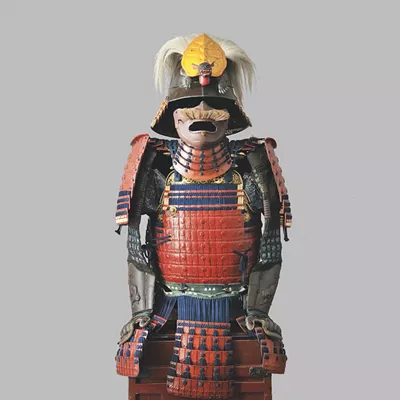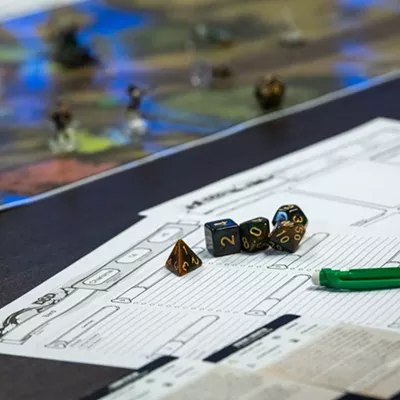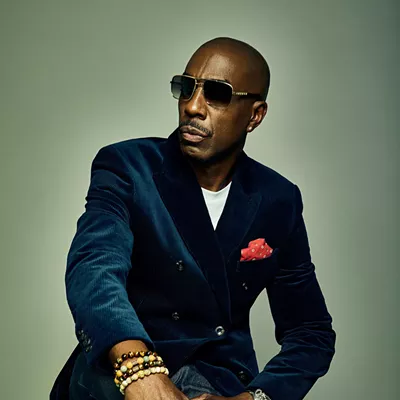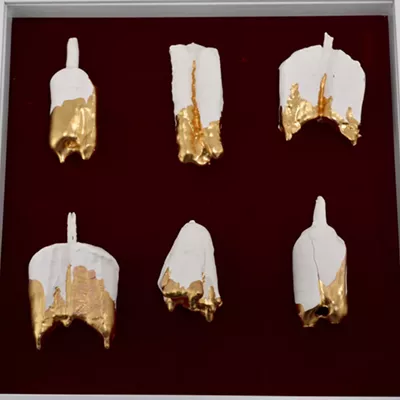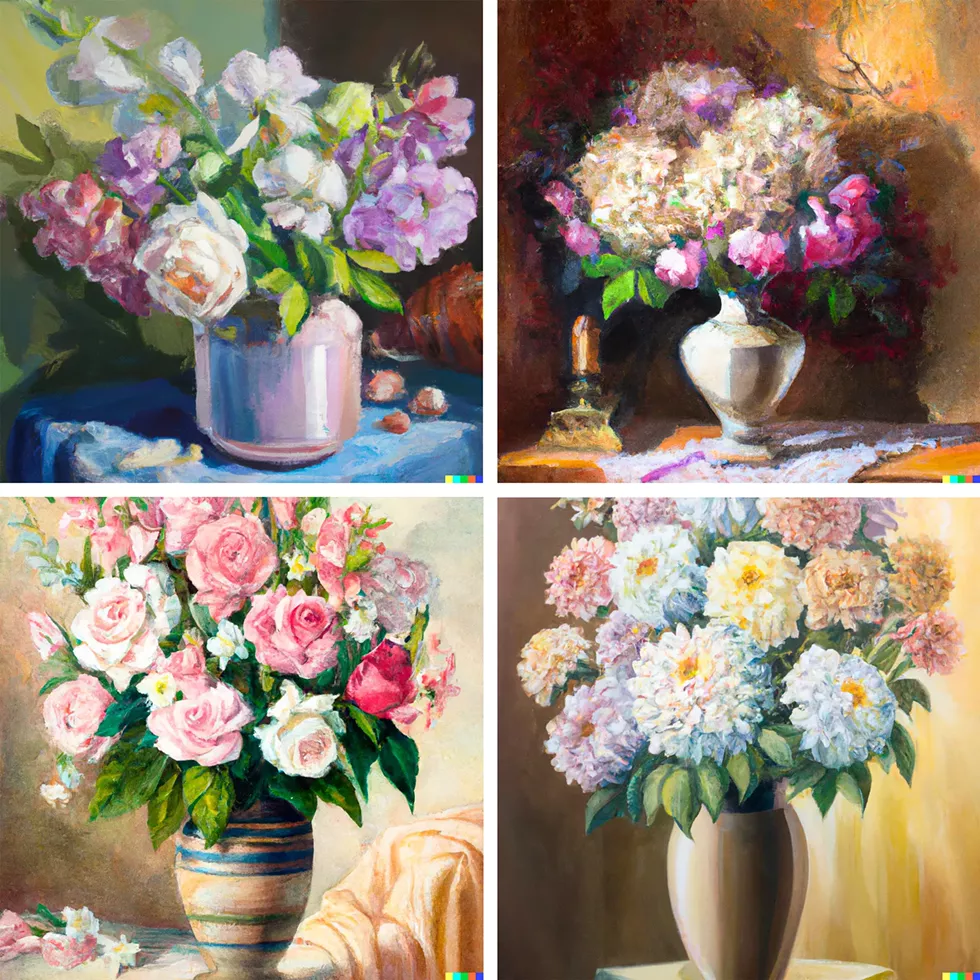
With just a few phrases and clicks, artificial intelligence can bring any idea to life.
A happy dolphin jumping over a rainbow in outer space, in the style of Lisa Frank.
A bouquet of pastel colored flowers in a vase, realistic still life painting.
Three kittens grocery shopping in the style of Beatrix Potter.
The results materialize onscreen in seconds. Humans, meanwhile, need hours, even days, to create similar output.
It's why, lately, artists of all types are reacting with both concern and curiosity to the rapid emergence of these powerful new tools. AI text-to-image generators seemingly exploded into existence in late 2022. Two of the biggest, Stable Diffusion and DALL-E 2, offer practically anyone with web access the chance to try their hand at prompting machine-trained systems, called models, to create depictions ranging from eerie echoes of reality to wildly goofy misinterpretations. While the models have limitations, their output is at times indistinguishable from human-made art.
In response, artists are collectively calling for new legal boundaries to protect their livelihoods, especially as evidence has emerged showing massive quantities of copyrighted work were used to train Stable Diffusion's model.
While much of the broader public conversation has been critical of AI-created imagery, several artists in the Spokane area are less concerned about it infringing on their professions.
"I personally don't feel like I'll be replaced, mainly because of the work I do," says Ashley Vaughn, a multidisciplinary artist whose focuses include painting, printmaking and photography. "I guess I would have to be confronted with an [AI-generated] image that looks just like mine.
"The kind of person who would want to buy artificially generated art for the sake of it being cheaper isn't the kind of person who would want to buy handmade artwork anyway," Vaughn continues. "I think that people who buy handmade artwork really value it."
With computer-generated imagery, that human connection and story behind a piece of art is just not there, she adds.
Local printmaker Chris Bovey, known for his retro-inspired homages to regional landmarks through his venture Vintage Print + Neon, echoes that belief. While Bovey uses digital tools to help design his screen prints and murals, none of his art can, of course, be made entirely on a computer.
"I don't anticipate there being a time where it's going to replace something handcrafted and handmade," Bovey says. "There might be digital artists out there that [AI] could affect the livelihoods of pretty significantly — I can see the validity of that — but I think there is something tactile that people like about my work. And I don't know if you can really replace that with a machine."
The team at downtown Spokane design and marketing firm Maker & Made sees the introduction of generative AI tools as yet another technology to both adapt to and leverage.
"Overall, everyone on our team seems more welcoming to AI playing a part [in] our everyday life than worried about it," Maker & Made co-founder Brittany Stodgell says in an email. "Our current mantra is 'adapt or die.'"
Her team also recognizes how image generators could help people who otherwise can't afford to hire a professional graphic designer.
"We hope AI will be integrated thoughtfully into our field as an aid to the tools we already know and use, and that it will not replace the majority of what we bring to the table," she says.
Spokane artist Tiffany Patterson, well-known in the community for her whimsical, pastel-hued color palettes and characters with large, expressive eyes, also doesn't think AI art is "inherently bad."
"It's just a question of how it's being used and who's profiting from it," Patterson says.
"One of the most disappointing aspects of this trending on social media is that you have giant corporations stealing these amazingly talented artists' work, using AI to study and reproduce it without their permission, and without paying them — leading to 'the masses' now celebrating homogenized appropriated art," she continues. "I guess to sum it up, I'm intrigued, disappointed, and thrilled to be alive at this moment to witness the evolution of art."

LAWS FOR ROBOTICS
Setting legal and ethical boundaries for AI-created works is a complicated and murky process.
Already, lawsuits are rolling in. One of the most prominent is a class-action suit launched by three U.S. artists alleging that Stability AI, the company behind Stable Diffusion and another image generator, Midjourney, infringed on millions of artist's rights by using their work without permission or compensation to train its model.
Stock photo company Getty Images is also suing Stability AI for the same reason. In an ironic twist, numerous examples of Stable Diffusion's output featured fragments of Getty's recognizable gray bar watermark.
It'll take a long time for copyright law to catch up to a technology that's literally changing every day, says Gonzaga University School of Law professor Jeffrey Omari, whose research focuses on law, technology and social science. And while it's hard to make predictions about how legal battles over AI art could play out, the music industry offers a few examples.
"From my perspective, we were dealing with a very similar issue in the early 2000s, with remix and mashup culture," Omari says. "And everyone in the industry was like, 'What does this mean for the future of the industry and copyright?'"
While remixes aren't universally protected under fair use, works deemed to be transformative — or different enough from the original source — can be. This precedent could be used in defense of generative AI output.
As to whether artists can protect their work from being used to train the models making those images, those involved with the class-action suit are demanding AI developers give artists a choice to opt out or to be paid if their work is used as such.
As a potential solution, Omari again draws a parallel from the music industry and its subscription-based streaming services, which can take some credit for helping reduce prolific music piracy of the early 2000s.
"Maybe there could just be a very large online database where artists could contribute their art and they would receive compensation for contributing," he says. "I don't know how practical that is, or if it'll ever happen, but something similar happened with music 15 years ago, so maybe it's possible in this realm."
For artists who want to find out if their work was used to train Stable Diffusion's model, a free website — HaveIBeenTrained.com — lets users search by keyword or image. (Stability AI has made its image dataset public, unlike DALL-E's OpenAI.)
"I keep using the word complex, but these are very challenging issues," Omari says. "We're at the point in history with this generative AI, and this doesn't just apply to copyright... It's affecting free speech norms because of misinformation, and there are plagiarism issues, so it's unsettling norms not just in copyright. These are societal issues that I imagine we'll be dealing with ethically and legally for years to come."
THE FUTURE IS NOW
Artificial intelligence-generated images probably won't put the region's artists out of work, especially those who work with physical media, but some are thinking one step further.
What if AI could be used to create art in ways never before possible?
That's how Travis Masingale, a design professor at Eastern Washington University, sees it. Masingale is on sabbatical for the 2022-23 school year and is using that time to study how AI systems can become yet another tool in the artistic arsenal.
Some artists have already been doing just that, Masingale says. Last year, a gallery in Vancouver, British Columbia, hosted "The Imitation Game: Visual Culture in the Age of Artificial Intelligence," a showcase contextualizing the long history of AI, how it's been creatively used before, and its current role in artistic and cultural expression. One of the show's featured artists, for example, trained an AI model using their massive corpus of work. Scott Eaton fed thousands of images of the human figure into an AI model to create new art such as videos melding elements of those photos with the motion of liquids.
"It's just in the infancy phase," Masingale says. "The generators that are making images and stuff, that's awesome, but I don't know if that's necessarily AI art, right? Like, they're not writing the code for it, they've learned how to manipulate the algorithm really well and have learned how to generate really beautiful images that we possibly couldn't have made before."
As an example, he's seen people use generative AI to visually depict dreams they've had.
Masingale compares the emergence of generative AI to what photography did to painting. Though artists at the time feared cameras would replace them, that didn't happen.
"When photography came, painting was really allowed to become about the actual painting and not about rendering an image," he says. "So you see this explosion of painting [and a focus on] painting and brushstrokes, and that wasn't there before because they were trying to capture reality."
And even in the early days of the internet, Masingale recalls the art community's caution about putting work online because people could "steal it."
"When I was first learning art, that was a big no-no. But now, we flip through Instagram all day long, right?" he says. "We developed a way of trust and being accountable, and so we'll have to do that again" with AI.
Until that happens, though, there will be growing pains.
"There is going to be some fallout for a while, and it's going to suck — there's no other way to say it — until we develop systems of accountability."
Even so, Masingale remains optimistic.
"I've been reading about this for a year now, so I'm not as scared. I'm more like 'Oh, what can we do with it, and how can we use this new tool?'" he says.
"But there is a lot of fear. A lot of traditional drawers and painters are scared that their images are going to be taken and used by a machine. But there will always be a need for human-made stuff, and it could possibly make human-made stuff more valuable because we recognize the time and interest that goes into it." ♦






